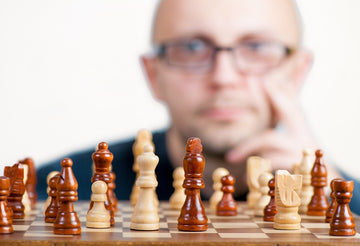The game of chess may seem very straight forward to the inexperienced player, but not to a veteran. These special rules in chess are an interesting read to all kinds of players!
1. Castling
Castling is a defensive move that allows the King to ‘jump’ it’s way from the center to the sides of the board. Castling can be either done on the King’s side or the Queen’s side between the King and the Rook provided that there aren’t any other pieces between them and the pawn structure ahead is undisturbed. Castling is an essential part of a winning strategy with over 80% of grandmaster victories involve Castling. The pawn structure here has an important role to play in deciding the outcome of the game.
Professional players resort to castling in their fourth and fifth moves which is very early on in the game. It is an extremely vital move that can make the winning difference.
Castling can be done only when:-
- The king and rook have not been moved
- The king is NOT in check
- The king does not pass through check
- No pieces lie between the king and rook

Check out this link that illustrates castling well: https://www.chess.com/video/player/castling
2. En-passant
En-passant is French for in-passing. This move was introduced when pawns were allowed to move two squares ahead on the first move. This move can only be employed to capture an opponent pawn when it has moved two steps forward in it's first move thereby avoiding a capture. This is a rule that acts as a hidden opportunity to some since it is not easily visible.
Employing this move to someone that is unaware may garner weird looks and an argument over the rules of chess. Nevertheless, it was all done in the spirit of fairness!
Interestingly, en-passant can be employed for a maximum of 8 times in a game of chess. This can only happen if all the pawns are moved two squares ahead in their first move.

Check out this link that illustrates en-passant well: https://www.chess.com/video/player/en-passant
3. Pawn Promotion
Hard-work and determination are virtues attributed to the successful. Pawns, while only able to move one square forward at a time, if able to reach the other end of the board can be substituted for any other piece. This is probably the biggest advantage of having pawns leftover during the end game which can be substituted for larger pieces and yield a checkmate.
Games among two equally skilled players quite often have similar end games wherein most major pieces on the board have been captured and it all comes down to pawn strategy and promotion.
The pawn is an underdog of the chess board. It represents an opportunity to evolve and develop into a more powerful chess piece at the other end of the board proving to be quite threatening in the hands of the right player. It is an extremely satisfying feeling to have checkmated your opponents using your pawns.





